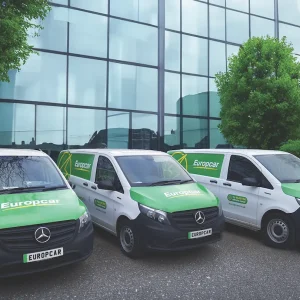After a three-week Covid-induced closure of its production plant in Ansty, near Coventry, back in April, LEVC’s roll-out of its VN5 electric range-extended van is back on track.
Order books opened in August and deliveries will begin from November.
The VN5 is available in three trim levels: Business costs £46,500 (excluding VAT, as do all the prices listed), with City £48,000 and Ultima, the version tested here, priced at £52,000. Factoring in the government’s 20% Plug-in Van Grant (PiVG) brings those prices down to £38,500, £40,000 and £44,000, respectively, which are still not inconsiderable amounts for operators to ponder.
The VN5, however, is well specified in all its guises. All models come with the likes of Bluetooth connectivity, DAB radio and a 9in touchscreen, plus safety features such as forward-collision warning, post-impact braking and cruise control.
City trim adds the Safety Pack, comprising road sign information, speed limit intelligent function, lane departure warning, driver and passenger curtain airbags, and front and rear parking sensors. The pack can be added to Business trim for £600 while the parking sensors are an additional £300 and £280, respectively.
Several other packs enable Business and City customers to select the features that take their fancy from those that are standard with Ultima. The flagship light commercial includes electrically adjustable heated seats, a rear-view camera, satnav, body-coloured bumpers, and 22kW AC fast-charging capability.
LEVC says the VN5 has an all-electric range of 61 miles but can cover just over 300 miles when the range-extender comes in to play. With on-board 50kW DC charging, LEVC claims the VN5 can be fully charged in 30 minutes. Charging with a standard 7kW socket takes 225 minutes.
The VN5 has a load volume of 5.5m3 and a payload of up to 830kg, although this falls to 780kg for the spec-loaded Ultima. The VN5 also has a maximum roof-load capacity of 100kg.
The van’s nearest rival is the hybrid Ford Transit Custom PHEV, which has a pure-electric range of just 30 miles but a total range of 345 miles.
The VN5’s taxi heritage (it is based on the LEVC TX London cab) means it also has the tighter turning circle, 10.1m compared to the Custom PHEV’s 10.9m.
The Ford LCV wins out for payload, though, with 1,110kg in Limited trim, and load volume, 6.0m3.
Excluding VAT and the PiVG the Ford Custom PHEV costs from £39,849 to £42,950.
A VN5 driver can select from three driving modes to match the environment: Save retains the electric charge in extra-urban settings such as motorways, Smart switches between petrol and electric power for mixed roads, and Pure EV is designed for urban driving.
We were impressed by the drivetrain, which achieves an almost seamless transition between the driving modes so that you do not feel as though you are driving a different vehicle when you switch from Save to Pure EV, for example. On the other hand, having to swipe across the touchscreen to change modes is awkward and can be distracting while on the move; a simple button or dial would be preferable.
Two stages of regenerative braking are available and by selecting the stronger B mode there is rarely any need to use the footbrake, which, when you get used to it, is a relaxing way to drive.
The load bay is reached via 60/40 split rear doors plus a nearside sliding door, although an offside sliding door can also be specified. The VN5 has a roof height under 2.0m, meaning it can safely access underground car parks.
With the solid bulkhead rendering a rear-view mirror useless, the side mirrors, which are handed down from the TX taxi, could stand to be bigger to give the driver a better view behind and to the sides of the vehicle, particularly if you want to make use of that tight turning circle with a swift U-turn.
LEVC VN5 Ultima
Price (ex VAT) £52,000
Price range (ex VAT) £46,500-£52,000
Insurance group tbc
Warranty 5yrs/150,000mls (Battery 8yrs/150,000mls)
Service intervals 25,000mls
Load length 2,447mm
Load width (min/max) 1,109/1,574mm
Load bay height 1,373mm
Gross payload 780kg
Load volume 5.5m3
Engine size/power 1,477cc/150hp
Combined fuel economy 314mpg
CO2 21g/km





